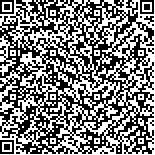刘佳,李岩,葛品,等.重复经颅磁刺激联合头眼运动对脑卒中后偏瘫患者下肢运动及平衡功能的影响[J].中华物理医学与康复杂志,2023,45(10):884-887
扫码阅读全文

|
| 重复经颅磁刺激联合头眼运动对脑卒中后偏瘫患者下肢运动及平衡功能的影响 |
|
| |
| DOI:10.3760/cma.j.issn.0254-1424.2023.10.004 |
| 中文关键词: 脑卒中 重复经颅磁刺激 眼球运动 下肢运动功能 平衡功能 |
| 英文关键词: Stroke Transcranial magnetic stimulation Eye movement Motor function of the lower extremities Balance |
| 基金项目:浙江省基础公益研究计划项目(LGF21H170004);嘉兴市科技计划项目(2021AD30122) |
|
| 摘要点击次数: 3978 |
| 全文下载次数: 4423 |
| 中文摘要: |
| 目的 观察重复经颅磁刺激(rTMS)联合头眼运动对脑卒中后偏瘫患者下肢运动及平衡功能的影响。 方法 选取脑卒中后偏瘫患者40例,按照随机数字表法分为对照组与观察组,每组20例。2组患者均给予常规药物及康复治疗,观察组在此基础上增加rTMS治疗及头眼运动,rTMS治疗每日1次,共20 d,头眼运动每次每个动作1 min,每日2次,每周5 d,连续4周。分别于治疗前及治疗4周后(治疗后),采用Fugl-Meyer评估量表下肢部分(FMA-LE)、Berg 平衡量表(BBS)、起立行走测试(TUG)、改良Barthel指数(MBI)评估患者的下肢运动与平衡功能。 结果 治疗前,2组患者FMA-LE、BBS、TUG、MBI比较,差异无统计学意义(P>0.05)。治疗4周后,2组患者FMA-LE、BBS、MBI评分均较组内治疗前增加,TUG用时均较组内治疗前缩短(P<0.05)。观察组治疗后FMA-LE[(27.05±4.06)分]、BBS[(39.00±5.85)分]、TUG[(18.15±3.22)s]、MBI[(66.55±8.67)分]改善优于对照组(P<0.05)。 结论 rTMS联合头眼运动可显著改善脑卒中后偏瘫患者的下肢运动及平衡功能。 |
| 英文摘要: |
| Objective To observe any effect of supplementing head-eye movement with repeated transcranial magnetic stimulation (rTMS) on the lower limb movement and balance of hemiplegic stroke survivors. Methods Forty stroke survivors with hemiplegia were divided at random into a control group and an observation group, each of 20. Both groups received conventional medication and head-eye movement rehabilitation training, while the observation group was additionally provided with rTMS daily for 20 days. The head-eye movement training involved one minute for each movement, twice a day, five days a week for 4 weeks. Before and after the treatments, both groups were assessed using the Fugl-Meyer Assessment Scale for the Lower Extremities (FMA-LE), the Berg Balance Scale (BBS), timed up and go tests (TUGs), and the Modified Barthel Index (MBI). Results The treatment improved both groups′ average FMA-LE, BBS and MBI scores significantly, and significantly shortened their average TUG times. The observation group showed significantly greater improvement than the control group, on average. Conclusion Combining rTMS with head-eye movement can significantly improve the lower limb movement and balance of hemiplegic stroke survivors. |
|
查看全文
查看/发表评论 下载PDF阅读器 |
| 关闭 |